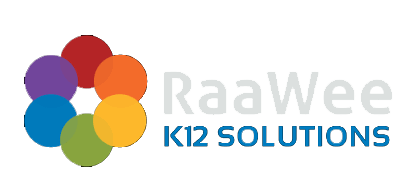
“Our RaaWee K12 Attendance+ System has been a key tool for all our efforts in building a 'Response to Barriers' strategy.”
Allison Woods, Assistant Superintendent of Exceptional Learners and Whole Child, Metropolitan School District of Warren Township, IN
PROFILE | MSD Warren Township, IN
Total students
11,440
Total schools
16
Student Information System
Synergy

Focus on Attendance Barriers. Allison Woods is Assistant Superintendent at MSD Warren Township. “Our focus on identifying and addressing barriers was fully supported by our RaaWee system, and allowed us to both strategize at the district-level and individualize for each student,” she says.
Transforming School Attendance:
A Comprehensive Approach to Overcoming Barriers
The Importance of Student Attendance for Academic Success
In recent years, schools have increasingly recognized the importance of student attendance as a critical factor influencing academic success. In this context, this case study explores MSD Warren’s comprehensive initiative aimed at improving attendance rates by systematically addressing barriers and fostering a culture of accountability and support. Through strategic communication, competition-based motivation, and barrier-targeted interventions, MSD Warren Township has achieved significant attendance improvement, showcasing a replicable success model for other districts. Notably, RaaWee K12 Attendance+ was a critical tool supporting this success.
Background: Challenges in Attendance Rates
Before the implementation of the new attendance initiative, the district struggled with inconsistent attendance rates, which hovered around 85.11% during the 2021-2022 school year. While various schools employed different strategies, there was no unified approach, leading to disparities in effectiveness. Recognizing this challenge, the district launched an initiative to create a comprehensive framework that would enhance communication, accountability, and student engagement. For more details, view the press release.
Key Strategies for Improving Student Attendance
Cultural Shift in Attendance Perception: The initiative began with a cultural change in how attendance was viewed by both staff and students. The district emphasized the importance of consistent attendance not only for academic success but for overall student well-being. This shift was communicated through proactive conversations with families, teachers, and students.
- Systematic Attendance Plan: The district developed a comprehensive attendance plan that outlined clear communication strategies, competitions among grade levels, and acknowledgment of students with excellent attendance records. This included the establishment of attendance boards in front offices that displayed daily attendance rates, early dismissals, and late arrivals, thus creating a sense of accountability and awareness.
- Proactive Communication: The district restructured its communication around attendance by introducing proactive measures. Family engagement liaisons began making preemptive calls to families of students identified as chronically absent in the previous year. This early intervention aimed to build relationships and support systems before the school year began.
- Tiered Intervention Model: The district implemented a tiered intervention model, addressing attendance issues at three levels: Tier 1 (universal strategies), Tier 2 (targeted interventions), and Tier 3 (intensive support). This approach allowed the district to tailor its responses based on the severity of attendance issues, ensuring that students received the appropriate level of support.
- Accountability Structures: To enhance accountability, the district established regular attendance meetings, involving various stakeholders, including technology teams and school administrators. These meetings facilitated discussions about data accuracy, intervention effectiveness, and ongoing monitoring of attendance rates. Additionally, schools were held accountable for implementing attendance strategies and ensuring follow-through on interventions.
- Celebrating Success and Competition: The district introduced competitions around attendance, fostering a sense of community and motivation among students. Monthly acknowledgments for students with perfect attendance and competitive incentives for classrooms helped create a positive atmosphere surrounding attendance. These initiatives empowered students to take ownership of their attendance and understand its significance.
Results: Significant Improvements in Attendance Rates
Ultimately, MSD’s attendance initiative has yielded remarkable results. By the end of the 2022-2023 school year, attendance rates improved to approximately 94%. This increase reflects not only the effectiveness of the implemented strategies but also the collective effort of the entire school community to prioritize attendance.
Additionally, the proactive communication and support systems established have had a significant impact on families, leading to improved relationships and increased engagement. Data analysis revealed that students previously identified as chronically absent showed marked improvement in their attendance records, highlighting the effectiveness of targeted interventions.
Addressing Challenges: Overcoming Resistance to Success
Despite the transformation being largely successful, the district faced some challenges during the implementation of the attendance initiative. Fortunately, staff resistance was minimal, as stakeholders recognized the critical nature of attendance issues. However, the main challenges included ensuring consistent communication among staff, managing data accuracy, and adapting to the unique needs of different schools within the district.
To overcome these challenges, the district emphasized collaboration among team members, provided professional development opportunities, and maintained open lines of communication. By fostering a culture of teamwork and shared responsibility, the district was able to navigate potential roadblocks effectively. RaaWee assisted with consistent and real-time stakeholder communications and collaboration among district and school team members and family members.
Conclusion: Lessons Learned for Enhancing Student Attendance
MSD Warren’s comprehensive approach to improving attendance serves as a valuable case study for other educational institutions facing similar challenges. By systematically addressing barriers, enhancing communication, and fostering a culture of accountability, the district successfully increased attendance rates and positively impacted student outcomes. This case study underscores the importance of collaboration, proactive intervention, and ongoing monitoring in achieving meaningful change within school systems.
Key Takeaways: Best Practices for Increasing School Attendance and Engagement
- A cultural shift towards valuing attendance is crucial for success.
- Comprehensive and systematic attendance plans can significantly improve rates.
- Proactive communication and targeted interventions are effective in supporting at-risk students.
- Fostering a sense of community through competitions and celebrations can enhance student engagement.
- Accountability structures and regular monitoring are essential for sustained improvement.
Ultimately, this case study demonstrates that with strategic planning, a collaborative approach, and powerful collaboration and communication tools from RaaWee, schools can create environments that support student attendance and academic success.
Trusted by Thousands of Schools Across the Nation
Trusted by Thousands of Schools Across the Nation






















